Poker is a game of strategy, observation, and quick decision-making. In online poker, a Poker HUD (Heads-Up Display) can be a powerful tool. It shows you important statistics about your opponents in real time. These stats help you understand how your opponents play, allowing you to make better decisions.
If you’re not familiar with HUD yet, we recommend reading our Poker HUD: The Ultimate Guide For Beginners article first. In the current article, we will not touch upon the technical issues of the HUD. We will focus on a detailed explanation of the most important stats that professional players usually have in their HUDs.
What Are Poker Stats In HUD?
Poker HUD stats are data points that a HUD collects and displays while you play. These stats track your opponents’ actions and tendencies over time. By analyzing these stats, you can spot patterns in how your opponents play, making it easier to exploit their weaknesses. You can use these stats for both in-game decision-making and analyzing the game outside the tables.
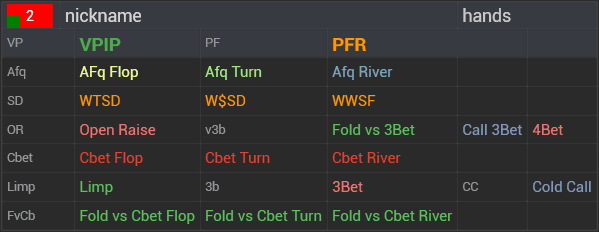
Key Poker HUD Stats
There are many stats a HUD can show, but here are the most important ones for beginners:
VPIP (Voluntarily Put Money in Pot)
VPIP is the most fundamental stat in poker. It shows a % of hands in which a player puts money into the pot when they don’t have to (small and big blind mandatory bets do not count).
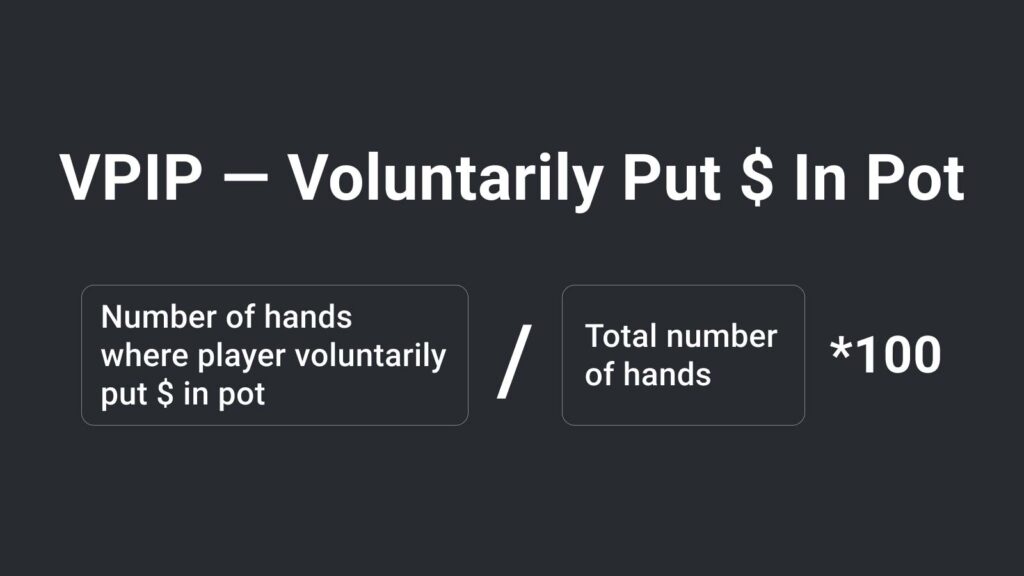
VPIP is the most important stat in your HUD. Even with a low sample size, while other stats may not yet be informative, VPIP can already provide valuable info on your opponent’s playing style. A high VPIP means a player is loose, playing many hands, while a low VPIP indicates a tight player who only plays strong hands. Use this stat to determine whether an opponent is loose or tight and adjust your strategy accordingly.
What Is a Good VPIP Range?
Please note that the values given for VPIP and other stats are approximate so that you have some kind of reference in your head. In reality, the intervals can vary greatly depending on the game type, the players’ styles, stack sizes, game limits, and other factors.
- 👍 The typical VPIP stat value for a good online player usually lies in the interval from 20 to 30. All the values mentioned here and further are relevant for a classic 6-max No-Limit Holdem Cash game.
- 🗿 If VPIP is less than 15, this player is too tight, they play only premium hands and are usually easy to read. They are also often called “nits”.
- 🐵 If VPIP is higher than 35, it’s a very loose style. Most often, recreational players have an inflated VPIP because they often enter the game with “playable” hands that in reality have a negative EV.
To better understand the meaning of stats, we recommend that you study the concept of ranges in poker. With the help of ranges, we can make assumptions about what hands an opponent might have with a given stat value.
PFR (Pre-Flop Raise)
PFR stands for Pre-Flop Raise and shows how often a player raises before the flop. A high PFR means a player is aggressive, often trying to take control of the hand early. A low PFR suggests a more passive player who prefers to call or fold rather than raise.
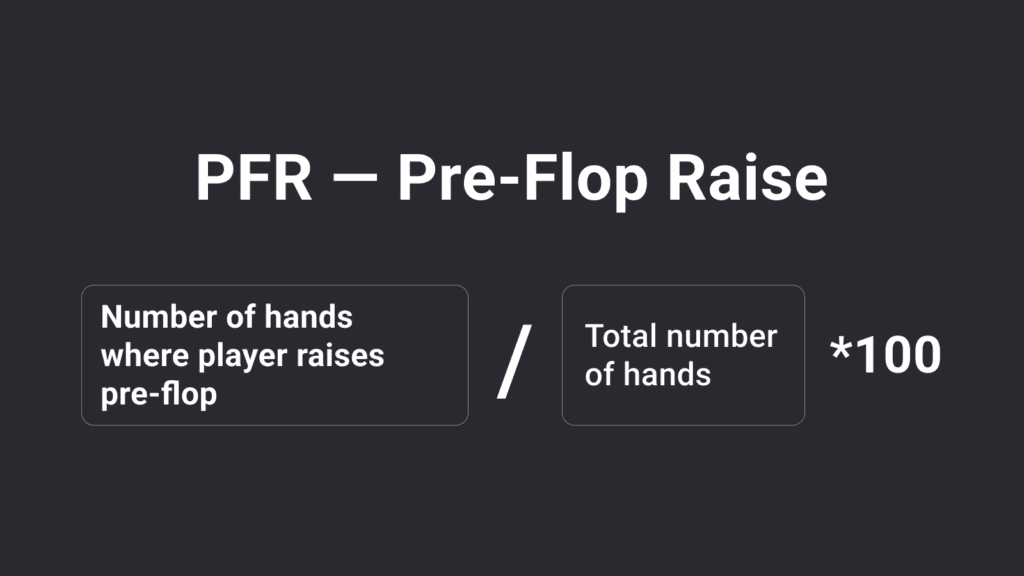
- 👍 The balanced PFR value is something between 15 and 25. Players in this range are aggressive but not reckless. They raise with strong hands and mix in some bluffs.
- 🗿 Players with a PFR of less than 10 raise very rarely. They are too cautious and may miss opportunities.
- 🐵 Players with a PFR above 28 raise too often. They are over-aggressive and can be exploited with the right approach.
Using VPIP and PFR Together
Comparing a player’s VPIP to their PFR can give you insights into their style. For example, a player with a high VPIP but low PFR might be loose-passive, meaning they play many hands but rarely raise.
In classic online poker cash games, professional players usually have a difference between VPIP and PFR not more than 10. A typical 6-max regular player would have VPIP/PFR stats like 26/21.
In poker discussions of hands and strategy, players often mention these 2 numbers together as key pieces of information about their opponents. For example, you might hear “I was on the button, made an open raise with A♣ 5♣, and got a 3bet from a 30/25 aggressive regular player from the small blind”. It means that the player on the small blind has a VPIP of 30 and a PFR of 25.
What software allows me to use all these stats?
The best poker statistical software on the market is Hand2Note. It provides you with a convenient and functional HUD, with the ability to add any stats to it. Another distinctive Hand2Note feature is that it provides you with an interface for creating your own stats. This way you can create unique stats for game situations.
3-Bet Percentage
The 3-Bet percentage shows how often a player re-raises before the flop. A high 3-Bet percentage means a player is very aggressive, often re-raising with a wide range of hands. A low 3-Bet percentage indicates a player only re-raises with premium hands. If you know an opponent’s 3-Bet percentage, you can adjust your strategy when facing a re-raise.
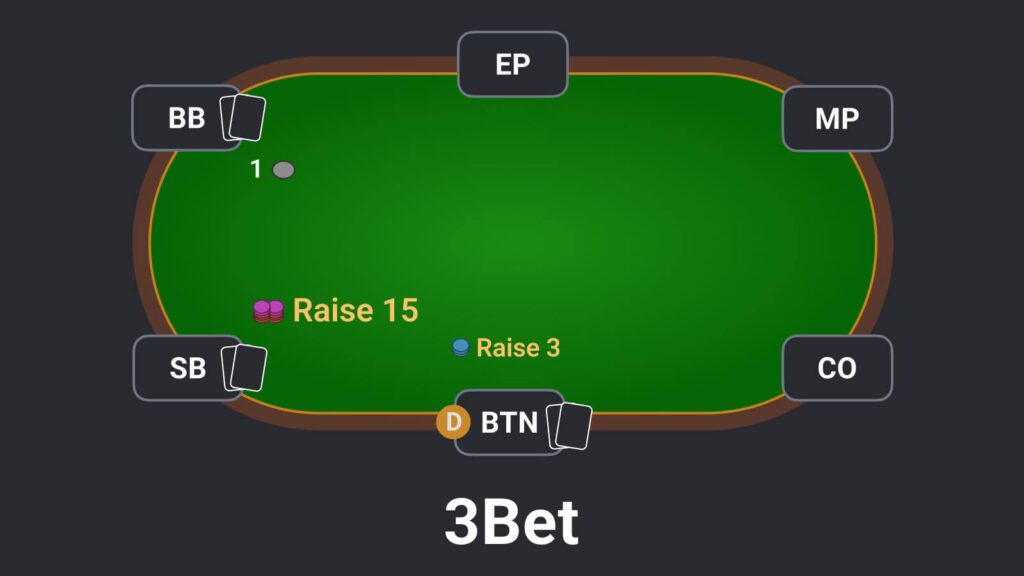
Learn more about 3bets and the typical values from our Poker 3Bet article.
AF & Afq (Aggression Factor & Aggression Frequency)
AF and Afq are two stats with the same principle: they show the degree of aggression of a player. They are calculated using slightly different formulas. AF is the ratio of the total number of bets and raises to the total number of calls of the player. While Afq is the ratio of bets and raises to all possible passive actions (fold, call, check).
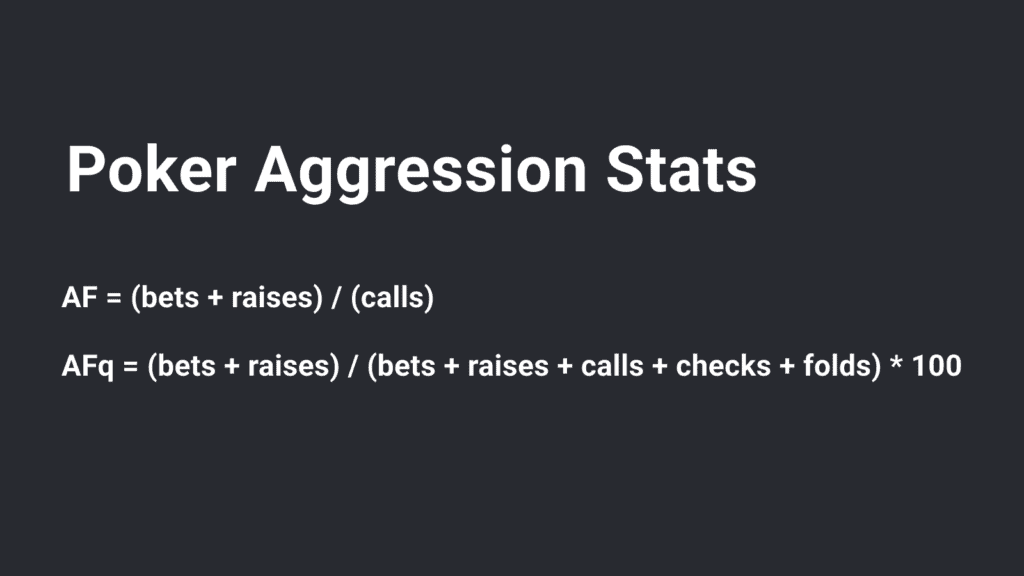
Which stat is better to use? You will find different opinions in the poker community, but AFq is considered a more practical and modern stat. Its value is more transparent – % of aggressive actions from all actions. It is also more informative on small samples – which is a very important advantage in modern games.
WTSD (Went to Showdown)
WTSD measures how often a player goes to showdown after seeing the flop. A high WTSD suggests the player likes to see the showdown and may be a “calling station,” someone who calls often and doesn’t fold easily. A low WTSD means the player is more likely to fold before the showdown, making it easier to bluff them out of the pot.
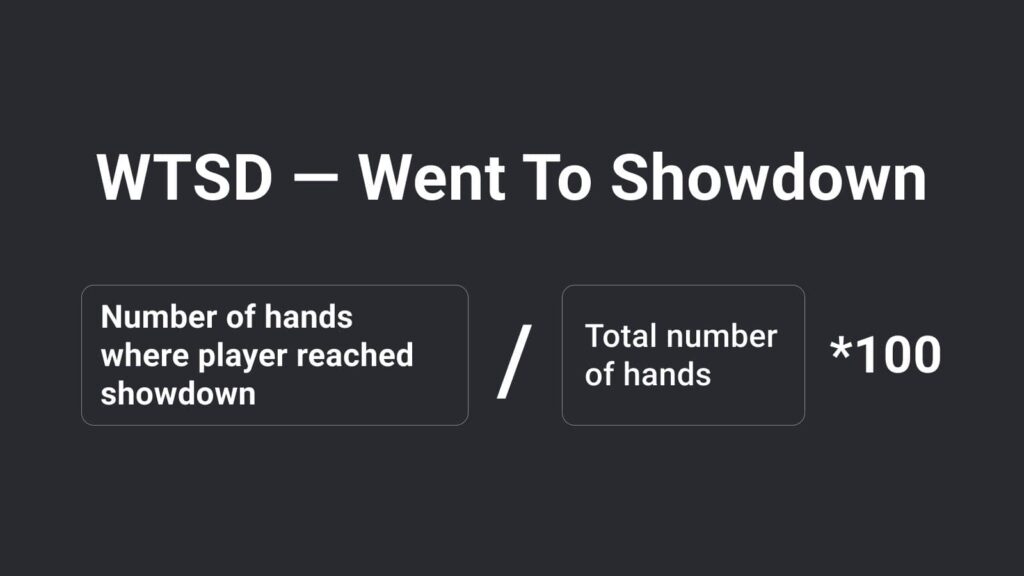
There are a lot of other poker stats that you will gradually learn as you progress through your Hand2Note journey. We recommend incorporating stats into your play and analysis gradually, moving from the more popular to the less popular ones.
How to Use Poker HUD Stats
Using Poker HUD stats effectively requires practice and experience. Here are some tips to get you started:
- Focus on the Basics. As a beginner, start by focusing on the key stats like VPIP, PFR, and Afq. These will give you a good idea of your opponents’ general playing style.
- Adjust to Sample Size. The accuracy of the stats depends on how many hands you have on a player. A large sample size gives you more reliable data, while a small sample size can be misleading. Be really careful with stats with low samples – variance can have a huge impact on them, and they do not convey any valuable information. Aim for about 10 samples for a stat – don’t take a stat seriously if it has less than that sample.
- Use Stats in Combination. Don’t rely on a single stat. Combine multiple stats to get a complete picture of your opponent’s style. For example, compare VPIP and PFR to see if a player is loose-aggressive or tight-aggressive.
- Adapt Your Strategy. Use the stats to adapt your strategy in real time. If you see an opponent has a high Fold to C-Bet, consider bluffing more often. If they have a high WTSD, be more cautious with bluffs.
- Remember Position Factor. The stat values we gave you above are typical, but the same player can have drastically different values for the same stat in different positions. For example, good players have a pre-flop raise of about 14% from the Early position and about 40% from the Button. This is because on the Button you have a much better position to enter the game, and you can play many more hands profitably.
- Don’t Lose Your Mind In Numbers. You still play poker – a human game. Don’t spend all of your time banks to look at numbers. There is a lot of other useful information available for you in the hand – action history, board texture, bet sizings, timing tells, your hand’s equity, and so on.
Conclusion
Poker HUD stats are powerful tools that can give you a significant edge in online poker. By understanding and using these stats effectively, you can make better decisions and improve your chances of winning. Start with the basics, learn how to read the stats, and practice using them in your games. With time and experience, you’ll become a more skilled and successful poker player.